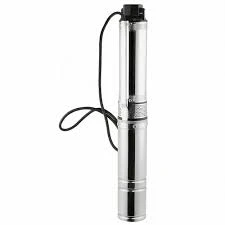Oct . 03, 2024 19:14 Back to list
how do submersible pumps work
Understanding How Submersible Pumps Work
Submersible pumps are an essential component in various applications, ranging from residential water systems to industrial processes. They are designed to operate while fully submerged in the fluid they are pumping, which distinguishes them from other pump types. This article will delve into the mechanisms of submersible pumps, their components, and their applications.
The Basic Mechanism
At its core, a submersible pump consists of a motor, impeller, and a pump casing. The motor is hermetically sealed, allowing it to function in submerged conditions without being affected by the liquid it is pumping. The primary action of a submersible pump is achieved through the motor driving an impeller, which creates a low-pressure zone that pulls fluid into the pump and subsequently pushes it out through a discharge pipe.
When the pump is submerged, the impeller spins rapidly, creating a centrifugal force that draws the liquid into the pump. The shape and design of the impeller play a crucial role in determining the pump's efficiency and capacity. As the fluid enters the pump, it is forced through a volute or diffuser, which increases the pressure and pushes the liquid to the surface or to a designated location.
Key Components
1. Motor The submersible pump's motor is located at the bottom and is equipped with fluid-cooling mechanisms. It is usually powered by electricity but can also be driven by other energy sources, depending on the application.
2. Impeller This is the rotating component that imparts kinetic energy to the fluid. The number of blades, their shape, and the design of the impeller determine the pump's flow rate and pressure characteristics.
3. Pump Casing The casing houses the motor and impeller. It is designed to prevent leakage and protect the motor from the surrounding liquid. Materials used in construction often include stainless steel, plastic, or other corrosion-resistant materials.
4. Cast Iron or Stainless Steel Strainer Located at the bottom of the pump, this strainer ensures that larger debris does not enter the pump, protecting internal components and prolonging the pump's lifespan.
how do submersible pumps work

Applications
Submersible pumps are used in a variety of environments, both residential and industrial
- Sump Pumps Commonly found in basements, these pumps are used to remove accumulated water and prevent flooding.
- Well Pumps These pumps are installed in boreholes to extract groundwater for personal or agricultural use.
- Wastewater Management Submersible pumps are employed in sewage treatment plants to transport waste fluids and solids.
- Irrigation Systems Farmers utilize submersible pumps to draw water from underground sources for irrigation purposes.
- Dewatering Construction sites often require dewatering; submersible pumps can effectively remove excess water from sites.
Advantages and Disadvantages
One of the most significant advantages of submersible pumps is their ability to operate while submerged, which eliminates the need for priming. They are also generally more efficient than surface pumps and can handle varying levels of liquid without losing performance. However, they can be more expensive to maintain due to the complexity of their design and the potential for motor damage from flooding.
In conclusion, submersible pumps are a vital component in a variety of applications, offering efficient solutions for moving fluids in submerged conditions. Understanding their operation and components can help users select the appropriate pump for their specific needs and ensure proper maintenance for optimal performance.
-
Submersible Water Pump: The Efficient 'Power Pioneer' of the Underwater World
NewsJul.01,2025
-
Submersible Pond Pump: The Hidden Guardian of Water Landscape Ecology
NewsJul.01,2025
-
Stainless Well Pump: A Reliable and Durable Pumping Main Force
NewsJul.01,2025
-
Stainless Steel Submersible Pump: An Efficient and Versatile Tool for Underwater Operations
NewsJul.01,2025
-
Deep Well Submersible Pump: An Efficient 'Sucker' of Groundwater Sources
NewsJul.01,2025
-
Deep Water Well Pump: An Efficient 'Sucker' of Groundwater Sources
NewsJul.01,2025
-
 Submersible Water Pump: The Efficient 'Power Pioneer' of the Underwater WorldIn the field of hydraulic equipment, the Submersible Water Pump has become the core equipment for underwater operations and water resource transportation due to its unique design and excellent performance.Detail
Submersible Water Pump: The Efficient 'Power Pioneer' of the Underwater WorldIn the field of hydraulic equipment, the Submersible Water Pump has become the core equipment for underwater operations and water resource transportation due to its unique design and excellent performance.Detail -
 Submersible Pond Pump: The Hidden Guardian of Water Landscape EcologyIn courtyard landscapes, ecological ponds, and even small-scale water conservancy projects, there is a silent yet indispensable equipment - the Submersible Pond Pump.Detail
Submersible Pond Pump: The Hidden Guardian of Water Landscape EcologyIn courtyard landscapes, ecological ponds, and even small-scale water conservancy projects, there is a silent yet indispensable equipment - the Submersible Pond Pump.Detail -
 Stainless Well Pump: A Reliable and Durable Pumping Main ForceIn the field of water resource transportation, Stainless Well Pump has become the core equipment for various pumping scenarios with its excellent performance and reliable quality.Detail
Stainless Well Pump: A Reliable and Durable Pumping Main ForceIn the field of water resource transportation, Stainless Well Pump has become the core equipment for various pumping scenarios with its excellent performance and reliable quality.Detail
